FUTURE PROOFING MARKETING


Being data-driven is complicated.

VOL. 36 • NO. 6 • JUNE 2023 THE AUTHORITY FOR THE DATA-DRIVEN BUSINESS PM40050803 ❱ 8
Call Centre KPI’s Matter ❱ 12 Marketers, Ignore SuperAgers At Your Peril
We can help.
Why
COURTESY CANADIAN MARKETING ASSOCIATION
An Interview With Alison Simpson, CEO, Canadian Marketing Association
We’ll Help You Keep It Clean
Dealing with bad data is a task no marketer needs on their checklist. Inaccurate, outdated, and duplicate records can build up in your database, affecting business decisions, the customer experience, and your bottom line. As the Address Experts, Melissa helps our customers improve their direct marketing efforts with the best Address Veri cation, Identity Veri cation and Data Enrichment solutions available. We validated 30 billion records last year alone, which is why thousands of businesses worldwide have trusted us with their data quality needs for 37+ years.
BAD DATA BUILDUP
Returned Mail & Packages
Missed Opportunities
Decreased Customer Insight
DATA CLEANLINESS
Real-time Address Veri cation
Change of Address/NCOA Processing
Geographic & Demographic Data Appends
Contact us for a Free Proof of Concept and ask about our 120-day ROI Guarantee.
Trust the Address Experts to deliver high-quality address veri cation, identity resolution, and data hygiene solutions.

Melissa.com 800.MELISSA (635-4772)
Vol. 36 | No. 5 | June 2023
PRESIDENT Publisher & Editor-in-Chief
Steve Lloyd - steve@dmn.ca
ASSOCIATE EDITOR
Michael Brooke - michael@lloydmedia.ca
DESIGN / PRODUCTION
Jennifer O’Neill - jennifer@dmn.ca

ADVERTISING SALES


Steve Lloyd - steve@dmn.ca
CONTRIBUTING WRITERS
McKay Bird
Romain Gauthier
Diana Lucaci
LLOYDMEDIA INC.
Pat Pellegrini John Tschohl
HEAD OFFICE / SUBSCRIPTIONS / PRODUCTION:

302-137 Main Street North Markham ON L3P 1Y2
Phone: 905.201.6600
























Fax: 905.201.6601 • Toll-free: 800.668.1838 home@dmn.ca • www.dmn.ca
EDITORIAL CONTACT:
DM Magazine is published monthly by Lloydmedia Inc. DM Magazine may be obtained through paid subscription. Rates: Canada 1 year (12 issues $48)
2 years (24 issues $70)
U.S. 1 year (12 issues $60)
2 years (24 issues $100)
DM Magazine is an independently-produced publication not affiliated in any way with any association or organized group nor with any publication produced either in Canada or the United States. Unsolicited manuscripts are welcome. However unused manuscripts will not be returned unless accompanied by sufficient postage. Occasionally DM Magazine provides its subscriber mailing
// 3 JUNE 2023 DMN.CA ❰
list to other companies whose product or service may be of value to readers. If you do not want to receive information this way simply send your subscriber mailing label with this notice to: Lloydmedia Inc. 302-137 Main Street North Markham ON L3P 1Y2 Canada. POSTMASTER: Please send all address changes and return all undeliverable copies to: Lloydmedia Inc. 302-137 Main Street North Markham ON L3P 1Y2 Canada Canada Post Canadian Publications Mail Sales Product Agreement No. 40050803 Twitter: @DMNewsCanada NEXT ISSUE: Location Analytics INSIGHT ❯ 4 Talking Points talkingpoints ON THE COVER ❯ 8 Why Call Centre KPIs Matter ❯ 12 Marketers, Ignore SuperAgers at Your Peril ❯ 20 Insights Association Triumphantly Returns ❯ 18 Look Where You Want to Go ❯ 10 Quebec’s Law 25 ❯ 22 Attitude Over Aptitude ❯ 14 Future Proofing Marketing An Interview With Alison Simpson, CEO, Canadian Marketing Association STRATEGY TECHNOLOGY PEXELS-TIMA-MIROSHNICHENKO PEXELS-ANDREA-PIACQUADIO ISTOCK/ PEOPLEIMAGES COURTESY CANADIAN MARKETING ASSOCIATION COURTESY IACC
talkingpoints
Canadians are 3x More Likely to Share Data with Their Financial Service
Providers Today than in 2020, Finds Ernst & Young Survey
The 2023 EY Open Banking Study conducted in collaboration with Symcor reveals that Canadians are now three times more willing to share data with financial service providers with whom they have an existing relationship — compared to 2020 – and this willingness grows as age increases.

“By understanding the consumer data sharing preferences for both consumers and businesses and putting customer experiences at the core of open banking strategy, organizations can pave a solid path leading to meaningful growth in this new frontier in financial services,” explains Saba Shariff, Head, New Product Development & Corporate Strategy at Symcor.
Panini Launches BioCred
Panini has just launched BioCred, a sophisticated, privacy-centred authentication system aiming to reduce fraud and improve service for walk-in customers visiting physical branches within the financial industry as well as in other business sectors, as well as automating several other functions related to customer identity, in-person transactions and payments.
BioCred is an unprecedented hub-like platform featuring FBI-certified fingerprint biometrics, QR code and NFC reading, electronic signature, digital signage and card and e-wallet payment capabilities. Panini’s patented biometric authentication process generates a unique, encrypted credential that the enrolled customer will retain control of, thus removing privacy, safety concerns, and the Institution’s. At the same time, the device uses a clever consolidation approach to combine several branchrelevant functions within the same compact footprint, optimizing ergonomics and cable management and allowing savings on both expenditure and maintenance.
“No bank doubts about the reliability and quality of our payment documents processing product range, but it’s time to embrace new challenges: while paper may be gradually going away, people aren’t,” says Massimo Biffi, Strategy and Business Development Director, Panini. “Panini is now broadening its scope to include Secure Identity and is ready to open up to new industries and applications, as well as new, exciting partnerships and opportunities. BioCred represents a new beginning and an innovative and ingenious proposal to a growing, attractive market in which we will stand alongside technology giants.”
“To unlock the full potential of open banking, financial service providers across the board need to build out a strategy that puts consumers at the centre of their acquisition and retention efforts,” says Abhishek Sinha, EY Canada Open Banking Leader. “Not only will this push providers to connect better with existing and new customers, but it’ll help them address evolving preferences to build customer loyalty in a sea of rising competition.”
Over the last three years, for every age group outside the 18- to 24-year-old cohort, security has consistently been the most critical variable in a personal banking customer’s decision to share data with their financial provider. But the survey finds that the kind of data customers are willing to share — and with whom — is evolving. The willingness to share data with Fintechs has increased steadily from 2020 to 2022 by approximately 16 percent. That growth was even more notable among 18- to 34-yearolds over the same three-year period, at 27 percent.
“Financial service providers can capitalize on younger customers’ willingness to share data to create insights-based products and customized value propositions,” adds Sinha.
Regarding SMBs, small businesses are more likely to share data if an element of financial incentivization is involved. On the contrary, medium-sized companies place more importance on integrating non-financial service offerings such as metrics dashboards, benchmarking and app marketplaces in their banking experience than in prior years. Medium-sized businesses valued the integration of these services 20 percent more in 2022 than in 2021. The data suggest that small businesses value these services 30 percent less than their medium-sized counterparts.
In addition, small and medium-sized businesses’ willingness to change providers is evolving. While small businesses show a decreased desire to change, medium-sized companies have become 11 percent more willing to switch providers from 2021 to 2022 as they seek the highest financial value.

Coveo Customers in Canada Can Now Keep Their Data In-Country























Coveo, a leader in AI platforms that transform digital experiences with intelligent search, recommendations, 1:1 personalization, and merchandising, announced that Canadian customers can now access the Coveo Relevance Cloud™ on the AWS Canada (Central) Region.
By leveraging the AWS Canada (Central) Region, a cluster of several data centers located in Montreal, Coveo will enable customers with data residency preferences (regulatory, compliance or other) to store data in Canada securely. Local AWS infrastructure facilities mean that customers can do more in terms of running mission-critical applications that need the lowest possible latency and benefit from more flexibility.
“More than 12 years later, it’s clear that AWS was the right choice for Coveo. AWS now offers many managed services that we leverage in our infrastructure. It speeds up development and enables people to focus on delivering values and not maintaining the base services or the infrastructure. AWS has been a great collaborator over the years and provided support and guidance in many ways,” said Marc Sanfaçon, Co-Founder and SVP of Technology at Coveo.
“AWS technology makes scaling up capacity to meet increasing demand easier. And their robust infrastructure, distributed data centers and failover features allow us to maintain near-perfect uptime on our critical services, which translates into better uptime and lower latency for our customers,” said Sanfaçon.
Coveo developed its multi-tenant search infrastructure on AWS in 2011, resulting in increased agility, rapid innovation, and the ability to expand into new markets and scale up to support growing demand. Coveo supports all of its global customers with its

// 4 ❱ DMN.CA JUNE 2023
■ ■ ■ ■ ■ ■ ■ ■ ■ ■ ■ ■ ■ ■ ■ ■ ■ ■
■ ■ ■ ■ ■ ■ ■ ■ ■ ■ ■ ■ ■ ■ ■ ■ ■ ■
COURTESY PANINI
COURTESY
COVEO
cloud infrastructure.
“As Canadian businesses adopt cloud and AI solutions at an accelerated pace, they’re looking to get more from their data faster,” said Eric Gales, Country Director of AWS Canada. “The Coveo Relevance Cloud™ AI platform, combined with AWS, will help Canadian businesses optimize costs, increase agility, innovate faster, and do more with data while keeping it in-country.”
“As a provider of legal services, it is crucial to ensure that our client’s data is protected and compliant with Québec data privacy regulations,” said Dave Hinse, Director of IT and Information Security at CAIJ. “The importance of data residency in Québec lies in the province’s legal framework and data protection laws, which require organizations to store and process personal information within Québec’s borders. By leveraging Coveo’s services from the AWS Region based in Québec, the CAIJ can ensure that our client’s data is secure, accessible, and meets regulatory requirements.”
Canadian Innovation Soars with AIDriven Manorlead’s ChatGPT Plugin for Real Estate
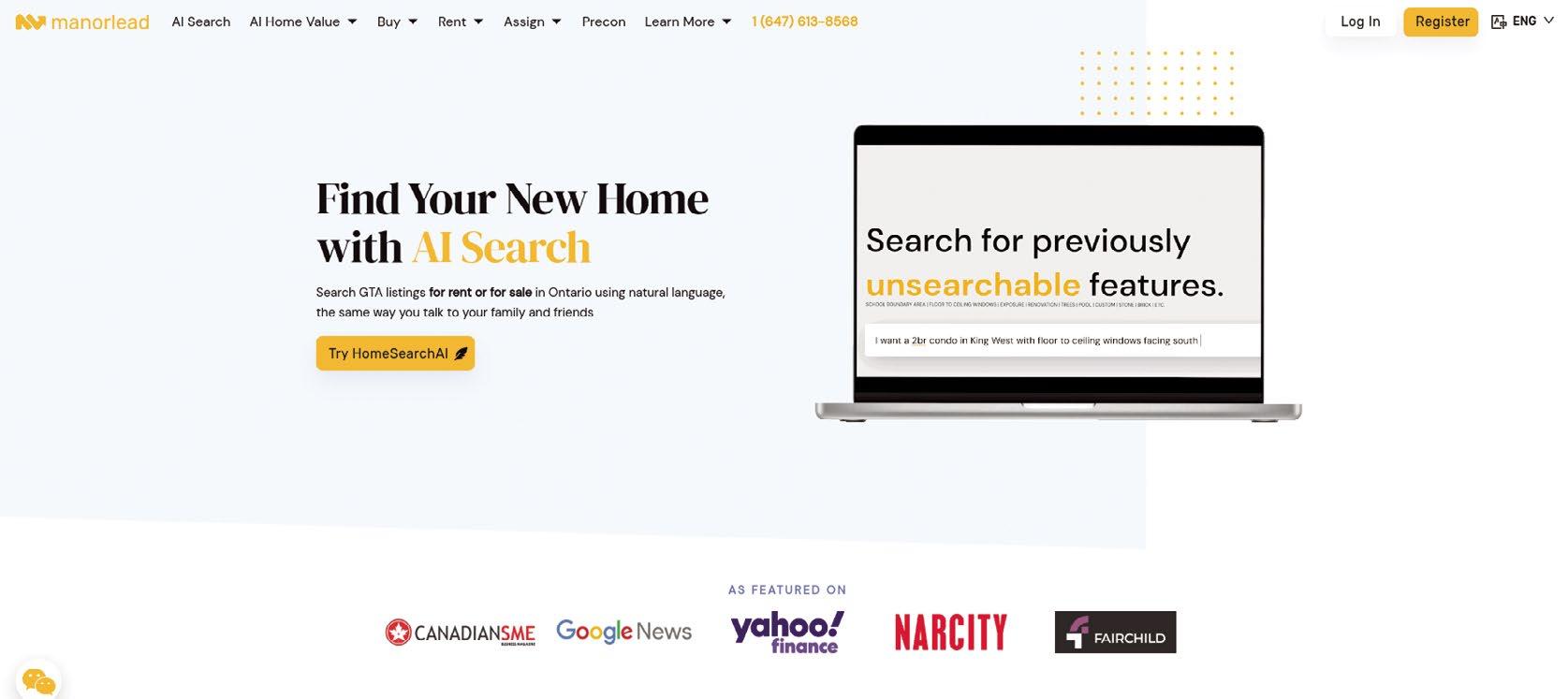
Manorlead, an AI startup, is disrupting the real estate industry with Manorlead’s ChatGPT plugin, one of the first early plugins approved by OpenAI. As the first Canadian-based AI real estate platform to launch such a plugin, Manorlead allows users to search property listings for sale or rent in Canada and the US effortlessly. It significantly enhances the user experience on its platform for Ontario listings.
accessibility. The AI rapidly processes this data, promptly generating a curated list of ideal homes.
Under the leadership of Co-founder Richard Xie, whose involvement in real estate began in his childhood assisting his father with open houses, Manorlead is primed for global innovation. Earning his real estate license at the earliest possible age and combining his computer science knowledge gained at the University of Waterloo with real estate, Xie laid the foundation of Manorlead. The company plans to extend its platform’s conversational AI and plugins globally by the end of the year.
“Generative AI is revolutionizing traditional professional service industries, such as real estate,” asserts Xie, Manorlead’s Co-founder. “We aim to enhance the property search experience through AI, transforming it into a dynamic, efficient process. We envision a future where agents have smarter tools and consumers enjoy a seamless experience.”
Demonstrating an unwavering commitment to innovation, Manorlead has ambitious plans to develop the ultimate intelligence system for the real estate market, aiming to elevate the customer experience in buying, renting, managing, assigning, and selling properties. Already boasting an AI-based property valuation tool, an assignment platform, and the first AI-powered new developments portfolio management system, the company plans to enhance the plugin and its technologies with features inspired by advanced technologies existing in financial markets.
Manorlead’s ChatGPT plugin represents a glimpse into the future of real estate — a future Manorlead is actively shaping. Beyond the plugin, Xie envisages a Manor Metaverse, integrating 3D virtual reality with AI for users
METRO Inc. announced the Metro, Super C, Brunet and Première Moisson banners in Quebec and all Jean Coutu stores in Quebec, Ontario and New Brunswick. More personalized and generous, Moi, an evolution of the metro&moi program, will allow consumers to earn points in close to 900 stores and redeem them instantly at the checkout to save more on their everyday essentials.
“The launch of Moi marks a major milestone in the company’s overall digital strategy as, for the first time, customers will be able to take full advantage of the complementary nature of our food and pharmacy networks. We are thus uniting the voices of five major retailers where 97 percent of Quebec households shop during the year. Together, these five banners form the largest network of food and pharmacy in Quebec,” said Alain Tadros, vice president, marketing at METRO.
It will now be easier for customers to earn and redeem points to save on groceries, beauty products, and health products. Points will be earned for every dollar spent at Metro, Jean Coutu, Brunet and Première Moisson. In addition, personalized offers, additional points in flyers and stores, special prizes for members and exclusive contests in the five participating banners will allow customers to accumulate points more rapidly.
Starting May 25, the new no annual fee moi RBC Visa credit card will be available. Cardholders will earn double the Moi points earned on eligible purchases at participating stores in our Quebec, Ontario and New Brunswick networks and everyday spending categories such as dining, gas and EV charging when they pay with their credit card. They will also earn 1X the Moi points everywhere else and access exclusive savings and offers from Avion Rewards’ extensive network of merchant partners, including Petro-Canada and RONA, Lowe’s and Réno-Dépôt. The Moi points will be fully redeemable at Metro, Jean Coutu, Super C, Brunet and Première Moisson, allowing customers to save on everyday essentials.
Pinterest’s New research Underscores That Positivity is a Crucial Driver of Action
Unveiled on May 10, 2023, Manorlead’s ChatGPT plugin leverages proprietary AI technology to curate property listings according to user preferences intuitively. Just as one might share details with a friend, users provide simple information such as location, price range, and property features. Furthermore, this innovative plugin supports multiple languages, expanding its
to interact with real estate in groundbreaking ways, signalling a transformative impact of AI on our world.
In June, Pinterest unveiled new research on the power of positivity and how consciously creating a positive online environment benefits Pinners, creators, brands and advertisers alike.
Pinterest commissioned a study conducted by Morning Consult that surveyed Canadian adults in April 2023. The original research was completed in 2020 and surveyed adults in the US; however, the updated study includes insights for the UK, Canada, France and Germany for the first time.
// 5 DMN.CA ❰ JUNE 2023
■ ■ ■ ■ ■ ■ ■ ■ ■ ■ ■ ■ ■ ■ ■ ■ ■ ■
■ ■ ■ ■ ■ ■ ■ ■ ■ ■ ■ ■ ■ ■ ■ ■ ■ ■ METRO
Inc. Officially Llaunches the Moi Rewards Program in Nearly 900 Food Stores and Pharmacies in Quebec.
■ ■ ■ ■ ■ ■ ■ ■ ■ ■ ■ ■ ■ ■ ■ ■ ■
■
COURTESY MANORLEAD
talkingpoints





values is important, compared to 53 percent of Millennials. Similarly, 64 percent of Gen Z say that seeing brands alongside harmful content has a negative impact on their perception of the brand, compared to 51 percent of Millennials.1

Pinterest remains an online oasis, with 2 out of 3 users feeling positive after interacting with the platform. This feeling increases with frequency as 77 percent of weekly Pinners feel positive after interacting with Pinterest. Research done in partnership with UC Berkeley’s Greater Good Science Centre last year also measured the effectiveness of
Z Canadians polled, as they adjust how they manage everyday spending amid economic uncertainty. Nearly eight in ten Gen Zs polled (78 percent) also say Interac e-Transfer is the simplest way for them to split costs.
Several external factors are influencing Gen Z’s ability to manage their finances. Nearly eight in ten Gen Z respondents agree on inflation (78 percent) and the cost of everyday essentials (75 percent) are two such factors. Overall, Canadians are shifting their spending in response. As essential spending continues, Canadians are leaning heavier on their own money. This is evidenced by yearover-year growth in Interac Debit (5 percent) and Interac e-Transfer (11 percent) volumes. Gen Z, in particular, is bringing a different perspective to their finances that aligns with both financial literacy resources and their values and financial reality. As such, a different style of financial advice is needed to help this generation take control.
Gen Zs (37 percent) agree that financial advice would be more beneficial if it focused on the emotional aspect of managing your money, compared to only 21 percent of Boomers surveyed. In addition, while older Canadians stick with traditional sources for financial advice, such as financial advisors, Gen Zs told Interac they’re most likely to seek out support from their immediate network
The research shows that positive environments drive impact for brands at every stage of the purchase funnel. When they’re in a positive space, half of Canadian adults agree that they’re more likely to remember brands they encounter online (52 percent), feel positive about brands they encounter online (52 percent), trust brands they see in a positive space (56 percent) and ultimately purchase a brand (50 percent).

“People come to Pinterest at key stages and moments in their lives, giving brands and advertisers a unique opportunity to connect with them when it matters most,” says Kristie Painting, Canada Country Manager, Pinterest. “The research shows that positivity is a key driver for action, so Pinterest sets the bar high for advertisers as a platform that will benefit both their audiences and bottom line.”
Platforms are increasingly being held accountable for the safety and security of their users, and brands and advertisers are recognizing that a positive online environment can make all the difference. People notice when a brand is missing from a positive space. 7 in 10 adults believe brands are responsible for advertising in positive areas (67 percent) and should be held accountable for where ads are placed (71 percent).
This is especially true for Gen Z, who increasingly hold brands to high standards that align with their values. The new data shows that 66 percent of Gen Z in Canada agree that finding brands aligning with their

a daily dose of inspiration among university students preparing for finals. The research found that just ten minutes a day on Pinterest can buffer against burnout, stress and social disconnection among Gen Z.
Shopping on Pinterest is a natural step for Pinners to turn their ideas into reality, as the research shows that positive experiences drive action. 55 percent of Pinners see Pinterest as a place to shop. It’s also now easier than ever for the 460 million people who use Pinterest every month worldwide to complete a purchase, as all Pins now can include links.
Gen Z Anxiously Navigating Financial Firsts and Shifting Their Everyday Spending in this Economically Uncertain Time





As Generation Z (Gen Z) enters the workforce and takes on a whole host of other financial ‘firsts’ such as purchasing groceries, paying rent or saving for a vacation, new research commissioned by Interac Corp., shows Gen Zs are more likely to feel stressed (42 percent), anxious (37 percent) and overwhelmed (31 percent) than any other generation when it comes to their financial situation.
With this, Gen Z admits to leaning on debit to take charge of their finances. As a selfproclaimed debit-first generation, Gen Z is more likely (70 percent) to frequently use debit, compared to 55 percent of non-Gen
like older family members (73 percent), siblings or cousins (20 percent) and friends (21 percent).











Conscious Economics has created Mindfulness & Money programming in partnership with Interac, rooted in the concept of financial therapy. Its aim is to help break down some of the barriers Gen Zs face when trying to feel in control of their money. The programming recognizes that while traditional financial advice plays a role for all generations, Gen Zs seek out additional emotional support to feel more in control of their financial reality and build their financial confidence.

// 6
■ ■ ■ ■ ■ ■ ■ ■ ■ ■ ■ ■ ■ ■ ■ ■ ■ ■
LIZA SUMMER
COURTESY PINTEREST















Why Call Center KPIs Matter: The Importance of Positive Customer Experiences

 BY M cKAY BIRD
BY M cKAY BIRD
The call center industry inherently depends on customer experience, so delivering a consistently positive experience is crucial. The truth is that it takes work to maintain that consistency. Not having positive customer experiences can pose a bigger problem for call centers than most realize. 42 percent of Americans are likely to abandon a brand after a poor customer service
experience entirely. As customer experience continues to impact the bottom line, call centers need to be able to quantify their ability to meet this demand. Businesses prioritizing customer experience and engagement can drive revenue growth rates up to 8 percent higher than their competitors, highlighting the direct impact of positive customer experiences on financial outcomes.
The crucial tool many call centers may overlook is Key Performance
Indicators (KPIs), which can elevate call center operations to new heights and ensure positive customer experiences. To establish a better pattern of positive outcomes with their customers, they need to step back and find a robust strategy that implements KPIs specific to their operations.
Why are KPIs relevant to a call center’s customer satisfaction?
KPIs are essential to call center success because they establish
parameters by which they can measure strengths and weaknesses and improve customer satisfaction with an informed strategy. KPIs are a compass for continuous improvement and performance optimization in call centers. Regularly monitoring and analyzing KPIs allows call center managers to identify bottlenecks, track progress and implement targeted improvements. Whether it involves refining agent training programs, optimizing call routing
// 8 ❱ DMN.CA JUNE 2023
INSIGHT
systems or adopting innovative technologies, KPIs provide the necessary feedback loop to drive ongoing enhancements and raise the bar for customer experiences. By carefully establishing and monitoring these performance metrics, call centers can unlock the potential for enhanced customer satisfaction, increased efficiency and improved overall business outcomes.
The first step in utilizing KPIs effectively is aligning call center
goals with customers’ ever-evolving expectations. For example, if the average hold time was 14.6 minutes, a KPI can be established based on the data from hold times that aim to improve them. By identifying and understanding what truly matters to customers, call centers can design KPIs that focus on delivering value and meeting their needs by identifying and understanding what truly matters to customers. Whether it’s reducing call waiting times, increasing first-call resolution rates, or enhancing agent productivity, aligning KPIs with customer expectations lays the foundation for positive experiences.
In addition, allowing agents the opportunity to make adjustments based on feedback from the customer can significantly impact satisfaction with customer service and overall success. Utilizing the call center data can provide helpful information about the customers’ experience with the agent and help identify ways to increase satisfaction and improve agent training.
Call centers may run into these challenges when establishing KPIs
While establishing KPIs will bring about significant improvements, the undertaking will be challenging. Call centers should first pick the right KPIs unique to their operations because they are not “one-size-fits-all.” KPIs must also be comprehensively measured to set realistic goals; when they’re not updated or revised, it’s time to challenge the “why” behind them. Like sales goals, they should be constantly assessed and adjusted as company goals and customer needs shift.
Additionally, not linking KPIs to the overall goals or strategy can lead to conflict within the call center. There will be misalignment if agents have KPIs that don’t match the overarching company goals. Meanwhile, not acting on insights gained or learned from the success or failure of agents to attain KPIs can undermine their intended purpose. To avoid these pitfalls and set themselves up for success in reaching their goals, managers should first research suitable call center tools to measure and achieve their unique KPIs.
KPIs that measure call center customer satisfaction
For call centers, KPIs are vital in ensuring managers and agents are held accountable for customer interactions. With proper oversight, these metrics also ensure that call centers maintain a quality brand and that customers receive a consistent and positive customer experience, regardless of whom they talk to.

Here are some examples of effective call center KPIs:
1. Call Arrival Rate: The number of daily calls and the particular high-call times. Tracking this metric helps identify the average amount of calls received in a day and when more agents are needed to handle busy times.
2. First Call Resolution (FCR): Measuring whether a call was successfully handled, the issue was resolved on the first call, or if the inquiry requires additional follow-up phone calls. Customers are happiest when they get the help they need quickly. Tracking this data identifies best practices for resolving issues during the first call and specific agents more skilled than others at resolving concerns.
3. Average Handle Time (AHT): The amount of time it takes for an agent to complete a call. Tracking this data helps identify agents or common issues that have caused calls to take longer — allowing you to improve coaching or interactive voice response (IVR) options.
4. Right Party Contact Rate (RPC): The total number of outbound calls that successfully reached the right person the agent was trying to contact. Knowing how many calls have gone to the correct person helps track account progress.
5. Revenue per Successful Call: Calculating how much revenue was made from a successful call will reveal a campaign’s success.
Best practices for call center KPI monitoring and management
Like sales or any other aspect of the business, it’s essential to set realistic adherence goals for agents. Look for trends in average handle time to build
goals and be consistent with the entire team. Further, call centers can make agent schedules as close to production as possible. Doing so will save time having to redo schedules altogether if an increase in call center volume hits unexpectedly. It’s also essential to allow for flexible schedules to help increase agent engagement and productivity while promoting a positive work-life balance. Call centers can consider turning agent overtime and time off into an advantage to help mitigate times when contacts are high or even slow — this can save thousands of dollars. Review goals and metrics annually and make improvements based on feedback from agents and managers. From there, call centers can implement a workforce management and optimization tool to boost performance and improve overall operations.
KPIs can drive call center success into the future
Establishing KPIs in a call center will profoundly impact brand reputation, customer loyalty and revenue. KPIs ensure that customer interactions are handled efficiently, leading to improved brand perception and customer trust. Since brand reputation and customer loyalty are built upon consistently meeting and exceeding customer expectations and resolving issues promptly, call centers can leverage this specific KPI data to hone in on the agents’ performance, boosting the bottom line.
This approach fosters customer loyalty, and those satisfied customers are more likely to become repeat buyers and advocates for the brand. Furthermore, call centers can identify opportunities to increase sales and drive revenue growth by focusing on KPIs tied to revenue generation, such as upselling or cross-selling rates. Ultimately, the strategic use of KPIs in a call center enhances operational efficiency and customer satisfaction and positively impacts brand reputation, customer loyalty and revenue generation.
// 9 DMN.CA ❰ JUNE 2023
INSIGHT
M cKAY BIRD is the Marketing Director of TCN. They offer scalable and customizable cloudbased software solutions to meet the needs of large and small call centers.
PEXELS-TIMA-MIROSHNICHENKO
Quebec’s Law 25: A New Privacy Law With Major Ramifications
 BY ROMAIN GAUTHIER
BY ROMAIN GAUTHIER
The second phase of Quebec’s Law 25 comes into effect in September 2023.
So what exactly is Law 25 and why should marketers worldwide care?
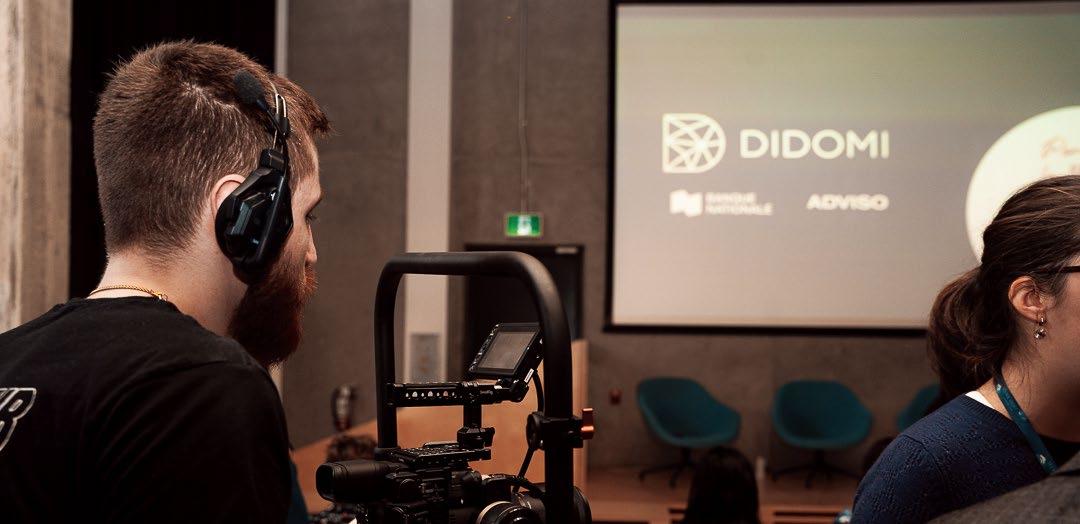
Law 25 applies to any company that collects, holds, uses or communicates to third parties information about Quebec residents, including those based outside the province.
It introduces new data protection rights for individuals and increased obligations for organizations handling personal information.
It updates Quebec’s privacy laws, impacting the Public Sector Act and the Private Sector Act.
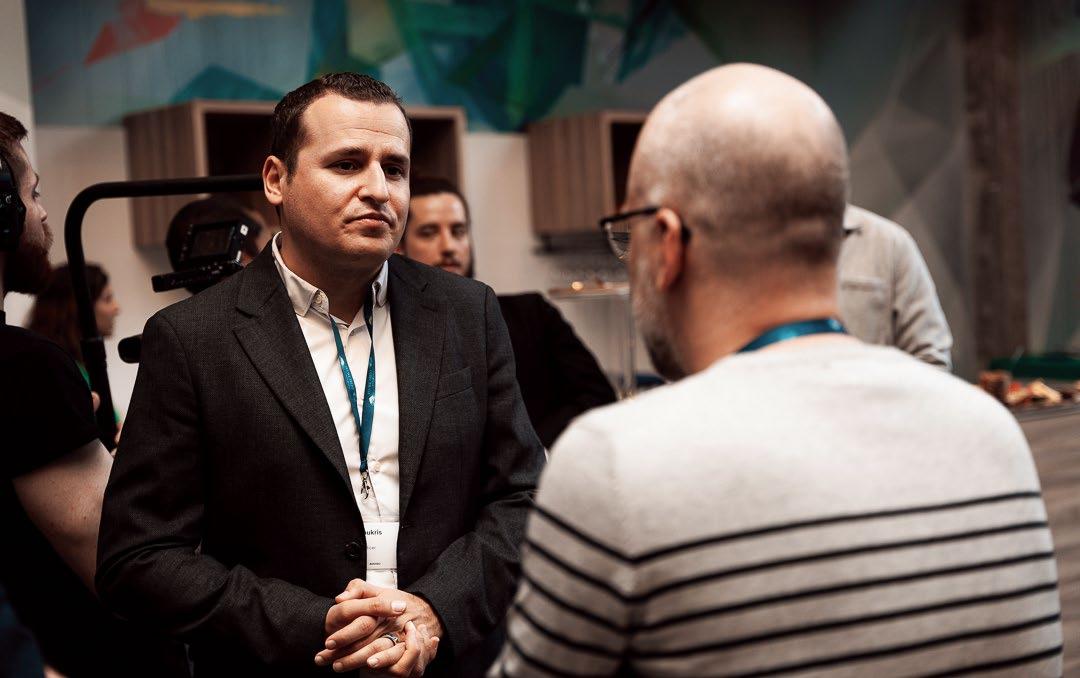

Personal information is defined as any information that identifies a natural person (e.g., name,
eMail, IP address, cookie ID of your analytics or martech stack, etc.). Consent is required before collecting personal data, consent is required in particular :

When a company wishes to collect personal information from a third party and not directly from the data subject (except where permitted by law);

When a company wishes to process personal information for other purposes than the ones initially defined;
When a company wishes to communicate personal information to a third party (except where permitted by the law);
How does Law 25 affect businesses based outside of Quebec?
At first glance, one might think that the new legal provisions
of Law 25 bear little relevance for businesses outside Quebec. However, the truth is that the consequences of this legislation will reach well beyond the provincial boundaries for two primary reasons:
❯ Global Data Protection Laws: Law 25 is consistent with these international regulations, and according to the Commission for Access to Information (CAI), it applies to any organization situated outside of Quebec if they have customers that access their products or services within the province. In essence, just one individual from Quebec visiting a global website can bring the service provider within the jurisdiction of Law 25.
❯ Pioneering Legal Framework: Law 25 serves as a groundbreaking legislative
model in Canada, and indicates the general trajectory for data regulation throughout the country. As Canada adopts a regionalized approach to data regulation, it remains uncertain whether this will trigger a “domino effect”, where adjacent governments begin implementing similar policies.
Looking at countries that have already implemented it, the consent collection required of businesses by privacy laws can result in data collection decreases ranging from 10 percent to 90 percent, for the worst implementations.

What are the penalties for noncompliance with Law 25?
The maximum amount of the administrative monetary
// 10 ❱ DMN.CA JUNE 2023
STRATEGY
Raphaël Boukris, co-founder of Didomi gave a presentation in Montreal about the new law and its ramifications.
PHOTOS COURTESY DIDOMI
penalty is $50,000 in the case of a natural person and, in other cases, $10,000,000 or 2 percent of the worldwide turnover of the previous financial year, whichever is higher.
In the event of a criminal offense: it is punishable by a fine of between $5,000 and $100,000 in the case of an individual and, in other cases, between $15,000 and $25,000,000 or the amount corresponding to 4 percent of the worldwide turnover of the previous financial year, whichever is higher.
The responsibility for enforcing these monetary penalties lies with the Commission for Access to Information (CAI).
How does Law 25 differ from other data protection laws in Canada?
Law 25 aligns Québec’s privacy laws with the GDPR, a leading data protection framework. Compared to the CCPA in the US, Law 25 has:

❯ Scope: Broader protection for natural persons, no residency requirements









❯ Privacy by default: Stricter with “confidentiality by default” compared to GDPR’s “privacy by design” and CCPA’s “after-theevent” approach
❯ Impact assessments: Requires Privacy Impact Assessments (PIRs) broadly, while GDPR is less stringent and CCPA does not mandate them
What rights do Quebec residents have under Law 25?
The right to privacy by default is a significant shift, Law 25 reverses the previous de facto position on online privacy, granting consumers the automatic right to confidentiality over their personal information.
❯ Privacy by default: Automatic confidentiality for personal information; profiling/tracking technology deactivated without express consent.
❯ Transparency: Companies must disclose purposes, means of collection, access/ correction

rights, third-party involvements, and possible data transfers outside Quebec.
❯ Withdraw consent: individuals also have the right to withdraw consent to the communication or use of the information collected.
What steps can companies take?

Just a few months before the implementation of phase 2 of Quebec’s Law 25, Didomi suggests a minimum of 6 proactive steps for businesses to ensure their compliance:
1. Designate a Data Protection Officer
Every Quebec company, regardless of its size, should have had a Data Protection Officer since September 22, 2022. If this is not the case, the person with the highest hierarchical rank within the company will automatically be designated by the law.
2. Align the various internal services and teams on the responsibility for compliance
Due to a lack of understanding of what the new law concretely implies, it often happens that the different internal services pass the buck on compliance responsibility. Is it the role of the marketing team, information technology, or the legal department? If you don’t have the answer to this question, leadership needs to step up to counter the lack of alignment.
3. Conduct an impact analysis of your internal processes
The collection of consent will inevitably lead to changes in online and offline processes. It is recommended to map out your technological environment and data flows, and then analyze the interdependencies of your different technological environments. How will the
necessity to collect consent impact your current processes?
4. Develop a forecast plan to deal with the impact of consent collection on the measurement of your performance
The volume of data collected will inevitably be impacted by the collection of consent, and it is vital to prepare for this, by quantifying this impact to manage internal and external expectations. The worst implementations could cause up to a 90 percent decrease in data collection, so this upstream impact analysis is crucial for better-adjusting strategies accordingly.
5. Select a technology solution provider to support you in this change
It may sometimes be tempting to develop an internal consent management solution. However, this approach is often time-consuming and not sustainable over time with the evolution of laws from a local and international perspective. Turning to proven solutions allows you to maximize data collection and have peace of mind regarding the necessary adaptability changes in relation to new laws (e.g., CPRA in California, LGPD in Brazil, etc.)
6. Conduct pre-production tests
Whether you are deploying a web-based consent management solution, for a mobile application, or for connected objects, it is imperative to conduct pre-production tests to validate that the technology is working correctly.
Didomi



strongly advises doing these tests at the beginning of summer 2023, before the implementation of phase 2 of the law.
At Didomi, we believe that privacy laws present an opportunity for organizations to do better, and differently. Locally, it’s also important to keep in mind all the benefits of quickly complying with Quebec’s Law 25. Indeed, increasing transparency can boost a brand’s revenue, as trust is the starting point for consumer engagement. With or without regulation, privacy protection concerns all citizens today. That’s why it’s essential for every company to surround itself with the best experts to adapt to this new reality.
ROMAIN GAUTHIER is the CEO and co-founder of Didomi. Didomi helps companies around the world turn various global regulations into real business opportunities that allow them to stand out from the competition.
https://www.didomi. io/en-us/



// 11 DMN.CA ❰ JUNE 2023
STRATEGY ISTOCK/ GREBESHKOVMAXIM
Marketers, Ignore SuperAgers at Your Peril
BY MICHAEL BROOKE
The population of Canada is getting older. You’ve probably heard that the fastest-growing demographic is those folks over 100. But demographics are only part of the story. As a reader of DM Magazine, you base most of your critical decisions on data. But sometimes, marketers ignore what is staring at them right in the face in the quest for more sales. Here are three simple questions that are data-driven concerning demographics.
Canada has a population of 38 million people
What percentage are over the age of 65?
8% = 3.04 million
15% = 5.7 million
19% = 7.3 million
The correct answer is 7.3 million
What percentage of people 65+ spend at least 1 to 4 hours daily on their phones?
The correct answer is
In a new book entitled SuperAgeing, former advertising executives David Cravit and Larry Wolf strongly believe that marketers need a whole new way of looking at what it means to be 65 and up.



As they explain it, the old way (literally) is something called DefaultAging. It still dominates healthcare, economics, housing, business, and virtually every aspect of our society. It views “old” as a condition that kicks in, almost abruptly, when you reach the traditional retirement age of 65.
“Old” means: You haven’t much time left (maybe 10–15 years).
You have worsening physical and mental health, so you can’t do much, and society shouldn’t expect much.
The best you can do is to minimize your suffering to achieve a relatively pain-free and dignified glide path to the finish line, which isn’t far away.
There are no positives, nothing else that “getting older” can bring you once you hit “old.”
David Cravit Larry Wolf

For Cravit and Wolf, demographics is not just destiny; it is multi-dimensional. They argue for a new way to view ageing: not just mathematically more years, but different years, with dramatically different characteristics.
Instead of a relatively short, painful period of decline, ageing becomes a dynamic, favourable time. Instead of mere survival, there is growth, development, new possibilities, and achievements.
What’s new and different — revolutionary, in fact — is how those “ageing years” are spent. And that comes from a whole new way of looking at what ageing is in the first place, along with a radical new way of managing it: SuperAging.
I had an opportunity to sit down with both authors on a bright sunny day in May. Our conversation started with a particularly contentious issue: ageism when marketing products and services. “Several folks are stuck on the obsolete model. This model is that at 65, you might have twelve years left, and you probably don’t have much time to do anything,” explains David.
But things are radically changing. Many in the 65+ demographic are not in a defensive role regarding retirement. Instead, SuperAgers recognize they have 25 to 30 years left and intend to make the most of those years.
While many marketers focus on the holy grail of the 18-34 demographic, the numbers of what is happening in the real world can sometimes tell a very different story.
Take vehicle purchases, for example. Bob Hoffman wrote on his Ad Contrarian website, “The auto industry continues to target 18-34-year-olds who account for
❱ DMN.CA JUNE
2023
// 12
18% 55% 69%
69% a home office? 60,000 250,000 1,000,000
The correct answer is
1,000,000
INSIGHT
only 12 percent of subcompact car sales. Meanwhile, they essentially ignore the 88 percent of the population who buy these “youth” cars. “How many car commercials do you see where there are drivers over the age of 55? The answer is zero,” exclaims David.
“When you look at the ages of those who work in advertising and marketing, many of those people are in their late twenties and thirties,” says Larry. “Middle managers tend to be in their 40’s. Very senior management could be in their 50’s, and that’s about where things top out.” As Larry points out, finding a marketing manager over 60 is rare.
The phenomenon of active longevity is something new for
many in society, including those who work in the marketing world. Several factors have propelled a longer life for those 65 and up. This includes medical breakthroughs, the promotion of a more balanced and healthier diet and the popularity of exercising.

David believes many marketers are infatuated with clicks and technology but must remember what it takes to drive sales.
“How does a company like Vice, which was once valued at 6 billion dollars, get sold off for less than 250 million?” he asks. “Ultimately, what it boils down to is the question every consumer (including those over 65) will ask: ‘What is it that you’re providing that I need?’”
SuperAgeing explains with great clarity that the Baby Boomers are collectively ageing in many different ways. The boomer marketplace has its unique segments. “The mistake is to assume that age is everything,” explains David. “The behaviour of those born between 1946 and 1964 differs greatly from the previous generation. The problem is that media is bought by age. For a group that worships data, why don’t they see the reality of the behaviour?” But maybe the answer lies with Oscar Wilde, who famously said, “The old believe everything; the middle-aged suspect everything; the young know everything.”
DMN.CA ❰ JUNE 2023
// 13 PEXELS-ANDREA-PIACQUADIO
Future Proofing Marketing:
BY STEPHEN SHAW
Marketers have plenty to worry about these days. Their budgets are under closer scrutiny than ever. They are being asked to do more with less. Consumer attention is scarce and getting worse - ad avoidance is now the norm — buying habits are unpredictable. The planning and orchestration of multi-channel campaigns have become fiendishly complex. And there is a shortage of “T-shaped” marketers to do the work. The profession is mostly populated by novices who are infatuated with “fonts and followers”, as the renowned brand consultant Mark Ritson acidly puts it, believing that marketing has been dumbed down.
Marketing has split into two competing factions — brand and performance marketers — who co-exist in a state of constant tension, each battling to gain the upper hand, convinced the other side has it all wrong. In fact, the entire profession seems to have come apart at the seams, splintering into many different specialty disciplines, without a unifying model to rally around. Every budget decision, it seems, is a slugfest between duelling priorities. And these days performance marketers are winning out since they have the “clicks” to show for it.
On top of all that, there are grave threats to the profession itself. Marketing is at risk of obsolescence unless it stops being seen as a cost centre and proves it can make a more meaningful impact on the business. In his book Quantum Marketing, Mastercard CMO Raj Rajamannar says marketing is facing an “existential reckoning”. He states that no one at the board level actually understands what marketing does anymore. Their general impression, he says, is that marketing is just about “ads and selling”. Marketers are held in such low regard, in fact, that most CMOs are not even welcome at the boardroom table. In the opinion of the board, the CMO’s job is to execute their marching orders, not to have a say in which direction the business should go.
It used to be so much simpler — companies made stuff and marketing’s job was to create demand. But today it is much tougher to draw a direct line between
brand-building and market performance. That’s why marketing budgets are skeptically received by CFOs. And the low financial literacy of most marketers forces them to fall back on jargon that no one gets, least of all CEOs, who don’t see much value in marketing to begin with. All they know is their kids are on TikTok, paying zero attention to ads.
Most worrisome of all is the long shadow of generative AI, stoking fears of massive job displacement. The grunt work of churning out lowlevel communications — sales copy, press releases, eMail messages, social media posts, and the like — could easily be handed off to an AI tool, wiping out a long-time training ground for marketing interns. The same goes for routine market and campaign analysis. Marketing departments might be gutted — their role is called into even greater question. All that would be left for them to do is make pretty pictures. And AI could even take over that job.

With these doomsday scenarios playing out in their heads, no wonder most marketers are concerned about the future, according to a recent survey by the Canadian Marketing Association. The CMA commissioned the survey under the new leadership of Alison Simpson to help map out the future priorities of the organization which was first established in 1967 as the Canadian Direct Marketing Association.
Alison’s roots, in fact, are in direct marketing, specifically digital marketing, but her career path since then has crossed over into many different disciplines, making her a true “full stack marketer”. That gives her a particular appreciation for the importance of upskilling and continuous learning. As a recent McKinsey report states: “The modern marketing opportunity is a skills and talent challenge”.
Shaw: What made you want to take on this role as head of the CMA?
Simpson: That’s a great question. I certainly wasn’t looking at the time, but when the call came, it got my attention for a lot of reasons. I’ve grown up in marketing. I absolutely love our profession. And just

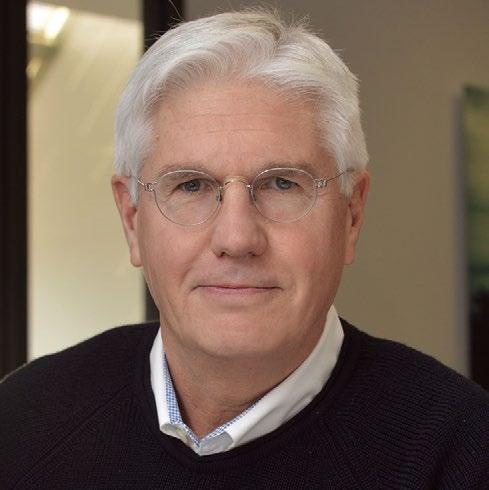
// 14 ❱ DMN.CA JUNE 2023
STEPHEN SHAW is the Chief Strategy Officer of Kenna, a marketing solutions provider specializing in delivering a more unified customer experience. Stephen can be reached via e-mail at sshaw@kenna.ca
STRATEGY
An Interview with Alison Simpson, Chief Executive Officer, Canadian Marketing Association
COURTESY CANADIAN MARKETING ASSOCIATION ISTOCK/ AINUN JARIAH
the opportunity at this stage in my career to have an even bigger impact on a profession that I adore, I just couldn’t say no. So, I took the first interview, met with the board, and really connected with them. One thing led to another, and it became an easy yes. The opportunity to have a lasting impact on our profession was simply too good to turn down.
Shaw: What do you understand to be the vision and mandate of the CMA? And what was the board’s direction to you in terms of how you steer the CMA into the future?
Simpson: A core part of the CMA is evolving our profession. As part of my immersion into the role, I’ve met with literally hundreds of members. I’ve conducted quite robust research to ensure that the vision I have for the CMA and how to transform it will be ways that marketers really need. First and foremost, the industry is going through a lot of changes. That is only going to accelerate. An absolute priority for me in leading the association is that the CMA becomes much more future-focused so that we can really help our members and the profession manage the absolute tsunami of change that consumers, brands, and businesses are experiencing.
Shaw: Is that what convinced the board to hire you, the need for change? Or has your point of view emerged through the short time you’ve been on the job?
Simpson: It’s been more a fusion of the two. Certainly, having been a member of the CMA, having been involved with the CMA, I had a point of view. But I didn’t want it just to be my opinion or the board’s opinion. It’s so important that every one of our members and the broader Canadian marketing community has a voice in how we’re going to shape Canada’s largest marketing association. So, that’s why I’ve spent a lot of my time meeting members, and also wanted to do research, so that we could have a way for members and marketers to share their thoughts on what the CMA should be doing.
Shaw: So, you’re in a listening mode right now, but to go back to your vision, how do you intend to pursue it?
Simpson: It will involve a number of things, starting with professional development. An example of a new initiative is a training course that we’ve developed on “How AI Can Make You a Better Marketer.” Given ChatGPT and the emergence of AI, we wanted to provide training that our members could benefit from as quickly as possible. And then another way that we’re being more future-focused is through the types of events we’re creating. I’ll be hosting our inaugural CMAfutureproof event, focused on helping marketers manage today’s business needs while preparing for the future. And I’m happy that we were able to secure the author of Quantum Marketing as our keynote,
Raj Rajamannar. He’s also the global CMO for Mastercard.
Shaw: Do you see a need at all to expand your membership base? And have you seen any change in the makeup of that base over time?
Simpson: Absolutely, I would welcome more members to be part of the Canadian Marketing Association, and the makeup of our membership has evolved as the marketing profession has evolved. All of Canada’s top industries are represented, but there’s certainly an opportunity to get more members in certain industries, and automotive would be a good example of that. We’ve also significantly grown our agency membership. We’ve also got all of the platforms represented. And then with the emergence of new technology, we have a lot of martech companies that are members. We’ve got post-secondary institutions, not-for-profits, and crown corporations. So, our membership really does represent the breadth of Canada’s business community.
Shaw: Now, one of the other roles of the CMA is as an advocacy organization, and currently in your direct line of sight, obviously, is the new privacy legislation to replace PIPEDA. What’s the CMA’s position on Bill C-27? Certainly, you appear to be in favour of modernizing it. Are there any concerns with respect to the way the legislation is currently drafted? Are there amendments you’re seeking?
Simpson: I’ve already spent a fair bit of time in Ottawa, meeting with all parties, and advocating on behalf of the need to move forward with Bill C-27. And the primary reason for that is our current privacy legislation was created twenty years ago. It’s held up surprisingly well, given how much the digital landscape has evolved in that time. But it is absolutely time to have it updated to protect Canadian consumers. It’s time to have it updated so that businesses can continue to innovate, market, and build their businesses in ways that make sense for both the economy and Canadians.
My number one priority is to encourage all parties to make it a priority. The bill has now gone past the second reading. The next step is to go to the committee. But it is so important that Canada’s privacy legislation is updated and that it’s done at a federal level. One of the concerns that we’ve been sharing is if the federal government doesn’t proceed, then the individual provinces could be in a position where they might have to create their own legislation. To have to manage through different provincial privacy legislation would be an absolute nightmare.
Shaw: A patchwork quilt of regulations, for sure. The other line of thought I’ve read is the desire to avoid the GDPR mistake, if I may call it that, which is introducing a level of complexity that is proving to be a compliance challenge for both consumers and businesses. Is that the case here — a desire to simplify the rules for people, but at the same time, extend data protection rights?

Simpson: That’s a great call out. We have the benefit of GDPR being in the market now for a few years, and it has absolutely created a staggering regulatory burden that governments can’t afford, taxpayers can’t afford, and it’s stifling innovation and growth. And it also disproportionately impacts small and mediumsized businesses. So, if you think about Canada, where SMEs are 80 percent of our economy, to have the type of legislation like the GDPR in Canada would be absolutely crippling to them. And then, on the consumer side, they’re absolutely experiencing consent fatigue, having to log on and say yes to so many layers. There was some recent research where 72 percent of European consumers say they’re annoyed by the level of permissions that are now requested. So, it’s not working for business, it’s incredibly labour-intensive and expensive, and it’s not working for consumers either.
Shaw: So how do you avoid overregulation?
Simpson: Part of the reason the current legislation in Canada has held so well for twenty years is it was principle-based. And its technology is neutral. Because it is designed to be flexible the law can accommodate rapidly evolving technologies and business models, as well as what Canadians are demanding, and it won’t become outdated quickly. And another really important part of Bill 27 is that it will provide additional protection for consumers. Canadians will have a new right to request that their data be deleted. And any businesses that don’t follow the new bill will be subject to the highest financial penalties of any country in the G7.
// 15 DMN.CA ❰ JUNE 2023
STRATEGY
Shaw: When you say principlesbased, does that mean it provides general guidance without being too prescriptive? I’m not quite clear what that means.
Simpson: Yeah, by being principle-based, they’re not trying to anticipate every potential scenario. Six months ago, ChatGPT was not on anyone’s radar. Now it’s all we’re talking about. To have privacy legislation that can anticipate and regulate technological change, I would argue, is impossible. And that’s where being principles-based gives the government greater flexibility.
Shaw: The legislation has moved very slowly through Parliament. What accounts for that?
Simpson: Well, I’ve never worked in government. The advocacy piece of the CMA is quite new to me. Coming from the marketing world, where you and I are very used to things moving at warp speed, it’s been an education to see how things move. Part of it is priorities, and that’s a big reason why we’re advocating to keep it high in the priorities of all three political parties, and really help them understand how it’s going to benefit Canada’s economy.
Shaw: You mentioned AI being a key area of focus, and clearly it is on everybody’s minds. Are there other big issues that you’re watching out for?
Simpson: I’m a marathoner, I love to run, so I’ll start with a running analogy. When I look at what marketers are faced with, we really need to win today’s race while running tomorrow’s. So, if you think about how quickly the pace of change is happening, that’s where the CMA, from an education perspective, from a thought leadership perspective, from our ability to bring together the marketing profession and talk about emerging opportunities and issues, is incredibly powerful, and a crucial role of the CMA. And then, in the research we’ve done with our members and Canadian marketers, a number of themes have emerged, and I can share some stats.
So, in the recent survey we did, 97 percent of Canadian marketers prioritized the future of marketing as absolutely the most important
developments, and making sure that we’re doing everything in our power to ensure a level playing field for our profession moving forward.
Those priorities are all around the future, but 92 percent are also looking for the CMA to help them drive business results today. Ninety-two percent are looking for best practices in measurement and investment across channels. These stats really do bring to life the need for the CMA to be supporting our profession in this balancing act between delivering business results today and at the same time preparing for the future.
Shaw: Marketing has always had a bit of a PR problem with the general public, viewed synonymously with advertising. And I could be wrong here, but I don’t think marketing is a top career choice for university undergrads either. What is the CMA doing to help make marketing more of an aspirational career path, for marketing to be seen, and these
one we had in March, 700 students from across the country joined to listen to four different marketers, five to ten years into their career, talking about marketing as a profession, what attracted them to it, why they’re enjoying it, and giving them a real-life example of what it’s like to be in marketing. And through the work we’ve done with CMA NXT, we have an active community of 14,000 students across the country.
I love our profession. Clearly, there’s a lot appealing about it. What attracted me is, it’s incredibly creative, but it’s creativity that drives commercial value. I thought I’d be a lawyer at one point. Thank God I wasn’t! What brought me to this career, what has kept me in this career, is the business impact that we can have, and the way that we understand consumers to a degree that no one else around the executive tables that I’ve been part of truly does. For us to truly be the voice of consumers is, I think, a wonderful opportunity,
the credibility of the profession by being as focused on business outcomes as possible.
Shaw: Do you see a gap growing in the profession between performance marketing and more classical brand marketing?
Simpson: I think it’s a good example of the pendulum swinging from one extreme to the other. Now we’re starting to see it swing back, and I’ll use Airbnb as an example. They are now investing more of their marketing dollars on the brand side, because they have seen the need to build the brand for tomorrow. Just being focused on performance marketing wasn’t going to drive the long-term results that they needed.
Shaw: I read a recent study where just 15 percent of marketers are over the age of 45. Marketing is the only profession I know of where experience doesn’t seem to count for very much. My

// 16 ❱ DMN.CA JUNE 2023
STRATEGY
An absolute priority for me in leading the association is the CMA becomes much more future-focused
own observation is that most marketing departments have been stripped of the grown-ups. There just seems to have been a fundamental change in the character of the profession, and I think it has affected the ability of CMOs to have any influence in the boardroom today. Bit of a rant there, my apologies.
Simpson: So, it’s a great point. However, I do meet a lot of Canadian marketers in senior leadership positions who do have the credibility and trust of their CEOs and CFOs for advancing the business. That’s not to say that our profession couldn’t benefit from valuing age and experience to a greater degree. I’d certainly agree that there is some ageism in our profession. Part of the way I’ve thrived in the industry is always looking at what new skills I should be adding to my toolkit, and being very deliberate in doing that. It’s hard to catch up if you haven’t stayed current. So, I think the onus is on marketers of all ages to be
media fragmentation and the splintering of marketing into many different disciplines, all clamoring for a piece of the budget. Is that something the CMA can help with going forward, helping create integrated performance frameworks?
Simpson: We absolutely have training around marketing metrics. It’s part of the standalone training, it’s part of the Chartered Marketer program. And then we also have a number of councils and committees that are looking at media measurement, and how we can more clearly assign attribution. But we certainly don’t have all the answers.
Shaw: The marketing models we’re most familiar with, the ones still taught in school, still in use today, were built for a world that doesn’t exist anymore. Do you envision a shift to a new, more holistic model, led by the CMA, to help
Simpson: I am in passionate agreement with you. The marketer has a tremendous opportunity to be the voice of the customer around the executive table. And I think that can be our superpower, because there isn’t another executive role that is closer to the customer. That’s such a powerful way to gain credibility and influence. We should be asking, “What are we doing to make sure that we are paying attention to the customer across all aspects of the business?”.
Shaw: We’ve got Gen Z now entering their early career years, with quite different attitudes toward the meaningfulness of their work, in their quest for authenticity, both as consumers and as careerists. It suggests to me there’s a major generational shift happening. How do you think that’s going to impact marketing?
Simpson: It’s a great question. I think it can be enriching to
then, to tie back to our earlier conversation, how do I ensure that we have a robust pipeline of students and young marketers who see our profession as desirable, and something that they want to be part of for the long term?
Another really important priority that I’m hearing, and that certainly is top-of-mind for the CMA, is helping our profession be as diverse as the consumers that we want to attract. So, on that note, we recently launched the CMA DEI Resource Hub on our website, which has an active and growing repository of tools, advice, and recommendations to make sure that it’s easier for marketers to recruit diverse talent. We also recently completed our third DEI study, but I have a couple of findings that I’m happy to share with you now. So, 96 percent of the respondents agreed that diverse and inclusive workforces drive better business results. It’s also absolutely integral to talent retention and talent engagement. What we found was that organizations which do not have a diverse leadership team are 10 times more likely to lose talent, and 4 times more likely to have disengaged employees. So, if you think about an industry where attracting talent is a top priority, diversity really represents a pretty compelling opportunity.
Shaw: What advice would you give marketers just starting out in the field?

Simpson: Your success is very directly linked to your level of curiosity, your level of agility, and the degree to which you’re willing to embrace change, because we all know change can be incredibly overwhelming and intimidating. If you’re curious about it, and can see it as an opportunity, that will bode very well for a career in marketing.
Shaw: One year from now, when you go back to the board, what does success look like?
Simpson: Success for me will be increasing the CMA’s ability to help future-proof marketers, and give them very actionable ways to understand how to position their brands and businesses for the future.
// 17 DMN.CA ❰ JUNE 2023
STRATEGY
The marketer has a tremendous opportunity to be the voice of the consumer around the executive table
BY DIANA LUCACI
The weather is getting warmer and I’ve eyeing my motorcycle again. I love being on my bike, open to where the roads might lead yet very focused in the moment. It’s the perfect getaway for someone whose brain never stops buzzing.
The interesting fact about steering a motorcycle is that you end up driving toward whatever you’re looking at. If you’re too nearsighted, you will overcorrect often, leaving you feeling anxious and exhausted. If you look too far in the distance, you won’t be flexible enough to adapt in the moment. Ideally, you can train yourself to look exactly where you want the bike to go next while keeping an overall mental map of the road and your destination. I think about marketing and entrepreneurship in a similar way.
To accomplish a long-term marketing plan, you have to begin by setting goals, doing the next right thing and continuously adjusting, testing and experimenting. You must think beyond generating leads from a single direct mail campaign, but across channels and through to

Look Where You Want to Go
Measuring attention and optimizing marketing design concepts


revenue. This means looking at each customer touch point critically, and objectively and optimizing for conversion. Look too close and you risk experiencing decision paralysis. Look too far and you risk not laying the practical foundation needed to get you there.
In my work, I interact with many in-house marketing and design teams within mid-large brands, and sometimes we work with growth and performanceminded creative agencies as well. Many brands are struggling with connecting with their customers. Many of them have goals yet a diluted, unclear roadmap for getting there. Many operate from a scarcity mindset and try to cut corners, timelines, and budgets — all to do ‘more with less’. (You will do less with less, that’s just a fact.) To thrive in today’s consumer landscape, marketers must treat their work with a scientist’s mindset. Start with an objective and hypothesis, experiment and get some initial results, then iterate and share your findings with other business units. This ‘growth marketing’ approach relies heavily on data analysis and testing different variations of
marketing tactics to find the most effective ones.
Thanks to advances in generative AI, you can create large quantities of content in seconds, allowing you to visualize and test concepts at scale. You can easily change backgrounds, characters or objects without starting from scratch. Imagine having 10 iterations of a direct mail piece in seconds. Now imagine testing them quickly, and objectively and selecting the one that best aligns with your marketing objective. How much time would this save the design team when choosing which concept
to present to leadership? How much more productive would your meetings be if you could discuss strategy while placing trust in your design professionals? How easy would it be to “press go” on the campaign and get some actual sleep the night before? This is why I love what I do. I enjoy helping brands optimize their message — what they’re saying, how they’re saying it — with help from neuroscience. To have a chance at conversion, the marketing message must pass its first challenge: getting attention. A particularly scarce commodity these days, human

// 18 ❱ DMN.CA JUNE 2023
Figure 1
TECHNOLOGY ISTOCK/
IMAGES COURTESY TRUE IMPACT MARKETING
Figure 2
PEOPLEIMAGES
attention has always been a brand’s currency. Customers pay for a service with their attention and for brands, more attention means more sales. Factors like the platform, creative execution, ad format, media context and demographic contribute to attention overall. For example, some creative executions may contain five different calls to action, leading to a very confused reader. To avoid this and to captivate attention, it’s helpful to consider design testing.
Until recently, measuring where customers look required samples of people, whether online or in person, and the use of very expensive technology that tracks eye movements, gaze patterns, pupil dilation and more. At True Impact, we spent over a decade conducting eye-tracking studies and collecting attention data. Traditional eye tracking is still very popular, however, it can be cost and timeline prohibitive for most applications. You may not be able to invest $25,000 and a week or two of testing every single piece of creative. However, thanks to AI, it is possible to predict where initial attention will go with an accuracy of over 80 percent. This means that within seconds, you can learn where most people will
look, most of the time, within the first second of attention. This form of predictive eye tracking — a product we call trueSCAN — uses a visual attention prediction algorithm, requires no participants and delivers insights for a fraction of an in-person eye-tracking study.



Let’s assume you have invested in running a direct mail campaign, a postcard for example, for an upcoming promotion. There wasn’t enough time to test the piece, so it went straight to print and everybody had no choice but to cross their fingers. The results showed a conversion of less than 1 percent and now leadership is asking for a conversation. Unfortunately, I’m very familiar with this scenario.
Understanding what worked (or didn’t) is very helpful, assuming we learn from the past. As a pragmatic thinker, I would instead recommend allowing a few hours for testing the piece before it is sent to print. Take Hand & Stone Spa for example. The original mailer featured a model that captivates all initial attention (See Figures 1 & 2), as seen by the bright red hotspot overlay. When the new design was tested, attention starts on the model however it quickly travels to the promotion and the main message (See Figures 3 &
4). The company experienced 25 percent more in-store service sales with the new design because it is simpler, and easier to understand, it directs attention to a few key areas and the facial expression is used intentionally.



In the case of a Telus poster, the high-contrast design element drew attention to the promotion details (See Figures 5 & 6). Using design areas of high contrast and perfect shapes helps to direct the gaze toward a key region.
Sometimes, attention may not be landing on a desired call to action. For example, the team at FPM Solutions created a postcard with the goal of driving more phone calls and appointment bookings. From the first design (See Figure 7), we learn what will be seen first: the human model and product, the “new location” promo
and the “20% off” promo. This was not immediately conducive to their goals, therefore our team made a couple of suggestions from a neuro-design perspective, to help optimize conversions. In the new version (See Figure 8), the model image demonstrates the real-life application of the product, the promotion is still very salient, and best of all, the phone number call to action is now one of the first 3 things to be seen. When the piece went out, there was no question as to whether people will know what to do with the information. The goal became more apparent for the brand AND the customer. This is how a few small changes at the design stage can make a big difference down the line, in helping your audience to quickly and easily understand your message.
All these examples have one thing in common: brands who know who they are. The design execution is aligned with the campaign objective, which then ties into the revenue objective. Successful campaigns rely on people to create them. People who are curious, experimental and not afraid to fail. A skilled marketing team leverages AI to help them think laterally, and empathetically and to connect the dots between content and context. It completely doable. Begin with a mental roadmap, a clear destination and always look where you want to go.
// 19 DMN.CA ❰ JUNE 2023
DIANA LUCACI is the Founder & CEO of True Impact Marketing, Canada’s premier Neuromarketing Strategy and Research firm.
Figure 3
Figure 4
Figure 5
Figure 6
Figure 7
Figure 8
TECHNOLOGY
Insights Association Canadian Chapter Triumphantly Returns to In-Person Events with Cultural Intelligence
 BY PASQUALE (PAT) PELLEGRINI
BY PASQUALE (PAT) PELLEGRINI
On a sunny morning in early May,
the Insights Association Canada Chapter (IACC) presented its Cultural Intelligence event at George Brown College’s Waterfront Campus. It was a triumphant return to in-person events since the last in-person event for IACC in early 2019. With a mix of new and experienced Board members, we wanted a “small, focused event” Toronto based around strong educational content that would also allow ample networking and learning opportunities for a community of insights professionals and students that were craving interacting without a screen. In just a few short weeks, the small event grew and grew, and we sold out to well over 125 registrations weeks before the occasion!
Cultural Intelligence was an obvious first choice as a content theme for our return to in-person events. Cultural intelligence means becoming aware of our own cultural biases and assumptions, being open-minded, working on relating to people from other cultures beyond speaking their language or tolerating differences. It means empathizing and actively working to understand customs and norms of cultures outside of your own. The more cultural intelligence you have, the more you recognize that different people have different ways of thinking or expressing themselves. It opens the door for celebrating diversity and being more inclusive, supportive, and effective, whether
as a human, friend, team member, leader, or a marketer.
We all see diversity every day. Far beyond the many cultures and diversity of nationality, ethnicity, and beliefs in this room, or around the largest cities in Canada where growth was fueled by immigration for decades, there exists diversity in gender identity, sexual orientation, backgrounds, experiences, and neurodiversity. The challenge is formidable.
A little over five and a half years ago, I joined Vividata and said to my team, my board, my members, “let’s fill the research gaps in understanding ALL Canadians.”
My motivation stemmed from growing up in an immigrant and ethnic family in an immigrant neighbourhood and eventually becoming aware that marketing completely ignored many new and established cultures in Canada. The solution was simply to “measure the right things, the right way” as my many mentors instilled in me, and these expensive and difficult to conduct studies will pay for themselves eventually, and they did. Soon we realized we had a lot of like-minded and extremely talented partners, suppliers, members, friends, and colleagues around us, many who had been working on cultural intelligence long before us.
The Cultural Intelligence event showcased that we have all learned so much, and we were fortunate to be able to gather so much great content and dynamic speakers. With one focused stream to enjoy, the attendees were immersed in learning and, in turn, were

engaging in thoughtful discussions with the speakers.
We were honored to have with us Elder Garry Sault to open the event with a smudge ceremony. Elder Sault is an Ojibway Elder for the Mississaugas of the Credit First Nation. His people signed over 20 pre-confederation treaties with the Crown which covers most of the Golden Horseshoe. He is a Veteran and served in the United States Navy. He resides on the Mississaugas of the Credit First Nation with his wife of 48 years and enjoys spending time with his 15 grandchildren. Elder Sault is also a storyteller and has welcomed King Charles (then still Prince), two Prime Ministers, three Premiers, many Chiefs, Environmentalists and many more to the traditional territory of the Mississaugas of the Credit First Nation.
Researching and engaging with indigenous communities “in a good way” was the focus of the first paper by Ashley Sisco and Jana George of Sisco and Associate Consulting. With a wealth of experience to share with the attendees, Ashley and Jana provided the do’s and don’ts of research with indigenous peoples. This first presentation really set the tone for the entire day with presenters sharing key insights on cultural research in Canada. Vividata’s Rahul Sethi and Michael Fragomeni followed with their presentation based on two of the largest consumer databases in Canada, the Study of the Canadian Consumer (SCC) and the SCC/ Multicultural, for a deep dive into Canada’s newcomers. Walter Flatt
delivered the Keynote Address for Dentsu with his talk on Unbiasing Data: Key Issues and Practical Ways Forward. Walter’s address tackled Artificial Intelligence and the inherent bias it brings to marketing applications from learning it does from the internet and social media.
The afternoon took a different turn with Howard Lichtman of Ethnicity Matters providing an agency perspective on effective marketing to diverse people and cultures in Canada. With decades of experience in ethnic marketing, Howard was able to use many examples of effective creative directed at diverse communities. The final paper was presented by industry legend Jan Kestle, founder and President of Environics Analytics. Jan presented data from EA’s new product that allows marketers to connect with newcomers across Canada. All the speakers then joined Hilary Borndahl of Miix Analytics for a dynamic and engaging panel session with questions and discussion from the attendees.
Obviously, an event of this magnitude and with such great content would not have been possible without the generous support of our sponsors. The IACC thanks our ten sponsors who enthusiastically supported this event: Dentsu, Sago, Miix Analytics, Element-54, Environics Analytics, Adapt Media, Pattison Outdoor, Ipsos, B3 Intelligence and Vividata.
The IACC is dedicated to
// 20 ❱ DMN.CA JUNE 2023
CONTINUED ON page 21
INSIGHT
Over 125 members of the Insights Association Canada Chapter attended the Cultural Intelligence event at George Brown College’s Waterfront Campus
COURTESY INSIGHTS ASSOCIATION CANADA CHAPTER
CONTINUED FROM page 20
fostering a vibrant, engaged market research and data analytics community across Canada. Led by an all volunteer Board that includes regional chairs located in Vancouver, Saskatoon, Toronto, Montreal and Halifax, we are devoted to helping our members develop their careers as practitioners and leaders. The IACC provides opportunities for members to advance their research and business skills, exchange information and nurture a community of insights professionals.
We accomplish this by:
❯ Providing forums – both inperson and virtually – to exchange experiences, resources, and ideas


❯ Offering expert educational content via conferences and webinars




❯ Encouraging peer engagement and mentorship through networking events
The IACC is the home for some of the industry’s most innovative and inspirational leaders and organizations, bringing together insights professionals from research companies, consulting firms,
research suppliers, technology firms, not-for-profits, trade associations, independent researchers and major corporations. We are privileged to facilitate educational and networking events for this vibrant community across Canada.
The Canada Chapter joins hundreds of companies and their teams across the US to form the Insights Association.
The overwhelming success of the Cultural Intelligence event was due to the efforts of so many volunteers, from the original IACC Board members who set up the chapter and kept things together during the pandemic years, to the new Board members who jumped in to help enthusiastically, and to the many volunteers.
For more information on IACC, visit insightsassociation.org/ Membership/Chapters/Canada
PAT PELLEGRINI is the President of IACC and the President & CEO, Vividata. In a career spanning two decades, Pat has established himself as a pioneer in audience measurement, cross-media research and consumer insights, and then successfully transitioned to senior leadership roles.
Resource Directory // 21 Your Source For Premium Email & Phone Appending Grow & Enhance your Direct Mail Lists with: Data Appending Mailing Lists Email Appends: Grow your list by 40% Phone Appends: Boost telemarketing lists Free Match Test: See how many we can add Consumer & Business Records: U.S. & Canada NCOA Sales Leads 1-800-MELISSA MelissaDirect.com LIST SERVICES LIST SERVICES BETTER DATA FRom CANADA’S LEADER iN CoNTACT DATA SoLu TioNS Ask for a FREE EvALuATioN and pricing! 1-800-454-0223 sales@cleanlist.ca cleanlist.ca ) an interact direct company Date: July 4, 2013 Client: Cleanlist.ca Docket: 3540 Application: Print, 4x4.325", 4C AD: Carter AM: Sinclair Version: F6 Media: Direct Marketing Magazine PLEASE NOTE This file has been optimized for its intended application only. For uses other than intended please contact Seed for alternate formats. Data Cleaning • Address Correction • Mover Update • Deceased Identification Data Enhancement • Phone Append • Demographics Prospect Databases • ResponseCanada • Consumers, Movers and Businesses Custom Solutions CL_ResourceAd_4x4.325_v04.indd 1 DATA ANALYTICS To advertise in DM Magazine Resource Directory Contact: Steve Lloyd, steve@dmn.ca CMY 10-1634-DCM-Resource Directory-OL.pdf 2 2023-05-03 9:06 AM DIRECT MARKETING
ATTITUDE OVER APTITUDE
BY JOHN TSCHOHL
As a business owner
or executive, what’s the most important thing you look for when hiring an employee? Is it a resume that is replete with degrees and an impressive list of previous jobs or positions? All too often those are what employers are looking for.
I suggest it should be something else. Sure, you want employees who are intelligent but there is something more you should be looking for. In a nutshell, you should look for attitude over aptitude. Why? Because you can train people on the skills they need if they want to work for you but it’s almost impossible to change people’s attitudes.
Service leaders recognize the truth — and the importance — of that statement. Vernon Hill, the former CEO of Commerce Bank, Metro Bank London, and Republic Bank, summed it up this way: “If you don’t smile during the first interview, there won’t be a second interview.” You would do well to put that principle in place at your company. Customer contact employees must possess and practice a positive attitude that will make your customers feel welcome and that will induce them to continue to do business with you. Those qualities are also important when it comes to building a team of employees who work well together and, in the process, drive your business to greater heights.

Most of us have worked with employees who should never be allowed to have personal contact with customers because they lack the ability to be engaging and helpful. While they might be exceptionally intelligent, they don’t have what it takes to form connections with other people. Often described as nerds, they would much rather spend eight hours a day punching numbers or staring at a computer screen than interacting with other humans.

Of course, you must have products and services of exceptional quality at great prices but, when you combine that with employees who have great attitudes, customers will continue to come knocking at your door. The combination of those three things is critical to the success of your business.
Look at the customer service leaders in your industry and follow
their lead when hiring employees.
Southwest Airlines, which has more than 66,000 employees, hires only one out of every 45 applicants. It focuses as much on qualities such as common sense and humour as it does on the skills employees need to do the job, which is ensuring that travellers have a safe trip that includes exceptional service. Southwest hires people to deliver unparalleled hospitality and, as a result, it has a passionate loyalty among the 130 million customers it serves every year.
When hiring employees, I highly recommend that you look for these attributes:
❯ Smiles. A smile goes a long way in sending a message that you care and that you welcome the business customers bring to you. It is a visual warm welcome.
❯ Friendliness. When a smile is combined with a helpful attitude and the use of a person’s name, it makes people feel important. It also builds trust and encourages customers to be open to advice about your products and services—and to spend their money with you.
❯ Communication skills. Look for employees who communicate well with you during the interview. Body language says a lot, so pay attention to it. Do they make eye contact as you talk, or are they hugging their arms and staring at the ground, sending a message that they’re rather anywhere other than where they are at that moment? Eye contact is critical to good communication.
❯ Personality. Some people just naturally connect with others. Those are the people who smile as they walk through the door — greeting coworkers and customers as they do so — and who, in the process, put smiles on the faces of those they encounter.
❯ Enthusiasm. People who are excited about their lives, their work, and their relationships emanate an energy that is difficult to describe — but you’ll recognize it when you see it.
// 22 ❱ DMN.CA JUNE 2023
JOHN TSCHOHL is the founder and president of the Service Quality Institute — the global leader in customer service — with operations in more than 40 countries www.customer-service.com
STRATEGY
ISTOCK/ LUCKYBUSINESS











Harnessing data across your organization to be truly data-driven is not easy. Contact us to learn more about how our PRIZM™ segmentation system helps you connect our data to activation for campaigns that drive real results.
Changing Demographics
EA’s ground-breaking mobile movement and web behaviour databases not only help you keep track of the “clicks versus bricks”, but know which Canadians are driving these trends nationally
Attitudes, Mindsets, Social
Environmental concern, privacy, trust and social connectedness. Psychographic indicators have shifted and Canadians’ social circumstances have changed. It’s never been more important to look at these indicators and map them to different populations.

Finances
Comprehensive, updated financial metrics on Canadians. Understand who is most stretched to make ends meet, who is affected by property market conditions and who has money to donate to their favourite charities.
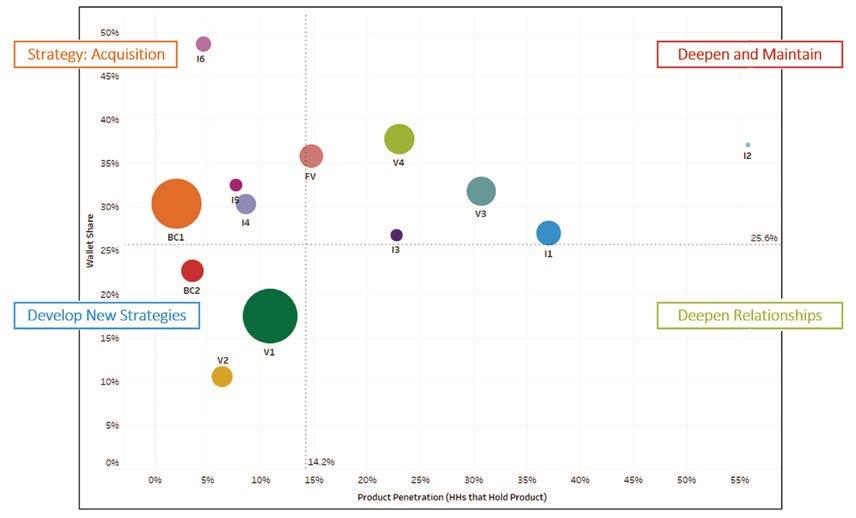
Media Activation
EA’s ever-growing network of over 50 activation partners includes adtech platforms, media agencies, publishers, broadcasters, list providers and distribution companies to ensure you can use our data for analysis and then reach your target audience.



Looking to achieve the results that data promises? Ask EA. For your free PRIZM consultation, contact us at: https://www.environicsanalytics.com/dm-mag

Print Radio Direct Linear & Connected TV SMS Email Social Media Out of Home Digital OOH Mobile Desktop
Deposits by Region: Penetration vs. Wallet Share Product Penetration (HHs that Hold Product) Wallet Share Deepen Relationships Deepen and Maintain Strategy: Acquisition Develop New Strategies
Vulnerability Index | Social Vulnerability 124 SOCIAL VULNERABILITY INDEX* 49.1% Index:188 Household Size -1 Person 11.7% Index:117 Unemployment Rate 91 Index Community Involvement 14.9% Index:197 Perceived mental health is fair or poor 51.5% Index:118 "You cannot be too careful in dealing with people" 24.6% Index:235 People know well enough to ask favour (none) 34.7% Index:156 Close relatives (0-2) 47.1% Index:110 Close relatives in same city (0-2) 33.4% Index:124 Close friends (0-2) 29.9% Index:107 Close friends in same city (0-2)
and locally as those behaviours change. Online & Offline Habits March 22 March 21 August 20 Ratio of Website Visitors to In-Store Visits January February March April May June July August September October November December January February March April May June July August September October November December January February March April May June July August September October November December January February March 2019 2020 2021 2022 0.0 1.0 2.0 3.0 4.0 5.0 6.0 1.9 1.0 2.0 4.7 Retailer B Retailer A With an aging population, increased immigration, relocation and changing commuter habits, our suite of demographic products help you stay on top of the changes – nationally, by neighbourhood, and everywhere in between.
Dominant Country of Origin China, People’s Republic of India Nigeria Toronto CSD by Dissemination Area
Being data-driven is complicated. We can help.














































































 BY M cKAY BIRD
BY M cKAY BIRD

 BY ROMAIN GAUTHIER
BY ROMAIN GAUTHIER











































 BY PASQUALE (PAT) PELLEGRINI
BY PASQUALE (PAT) PELLEGRINI





























